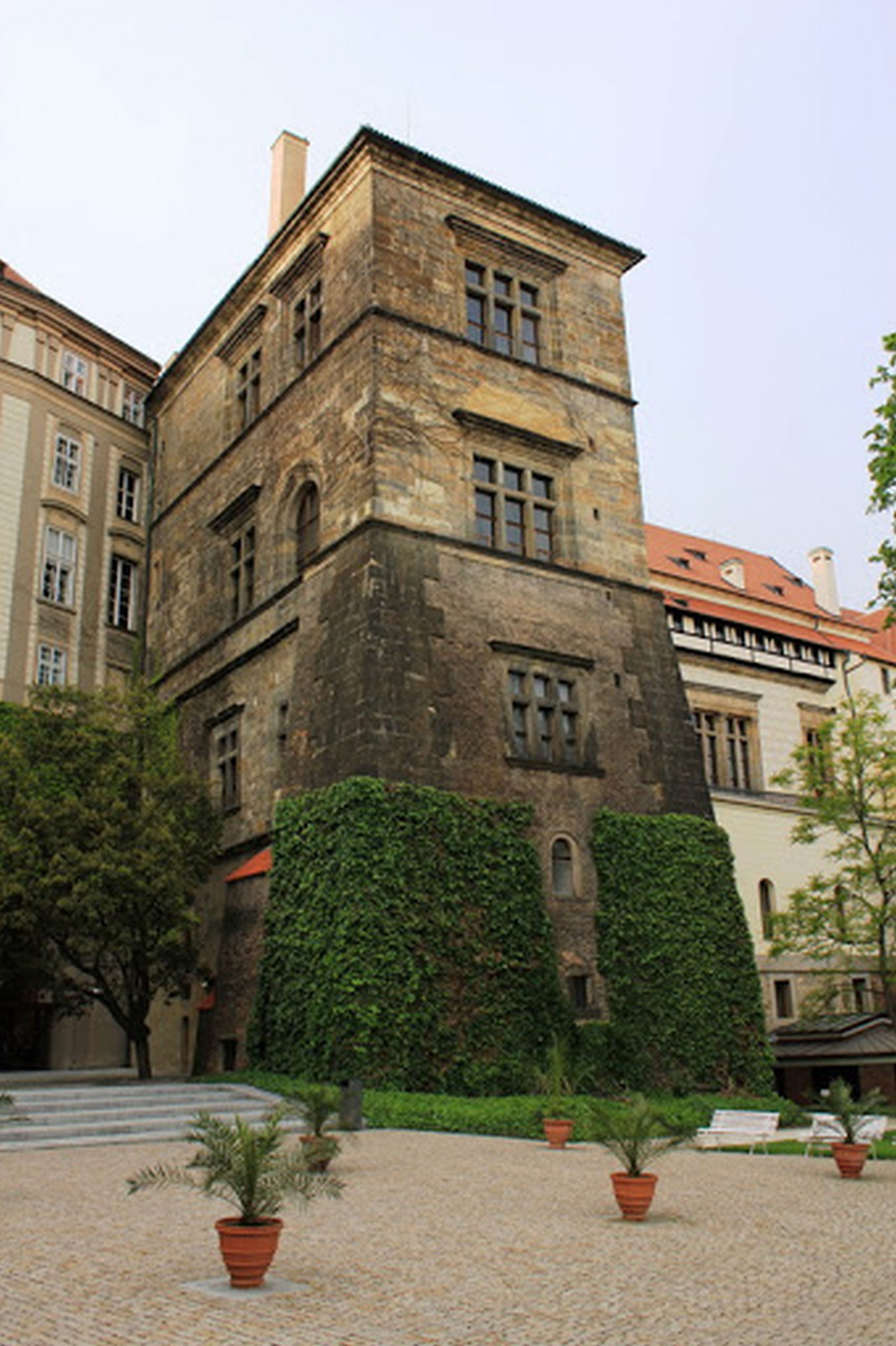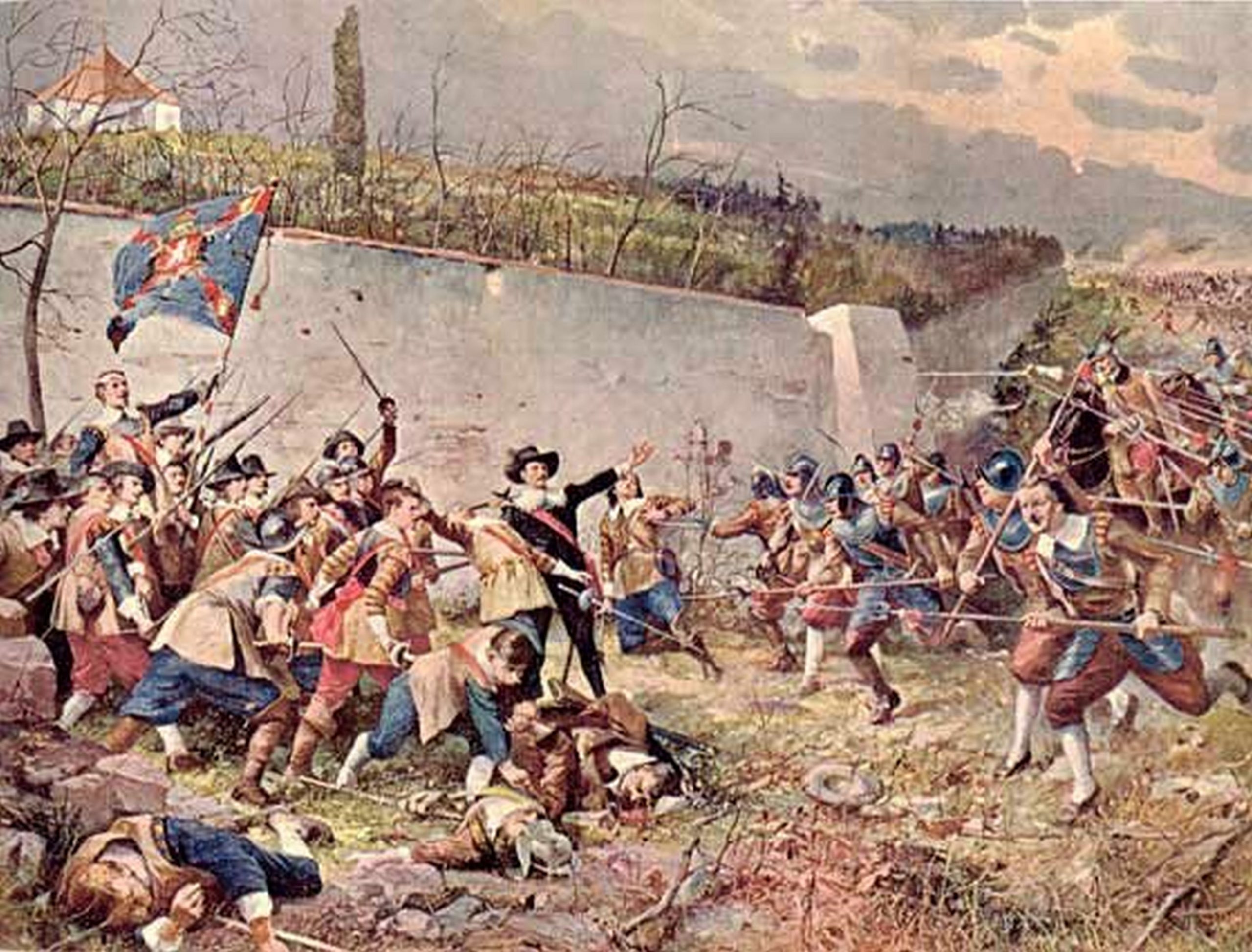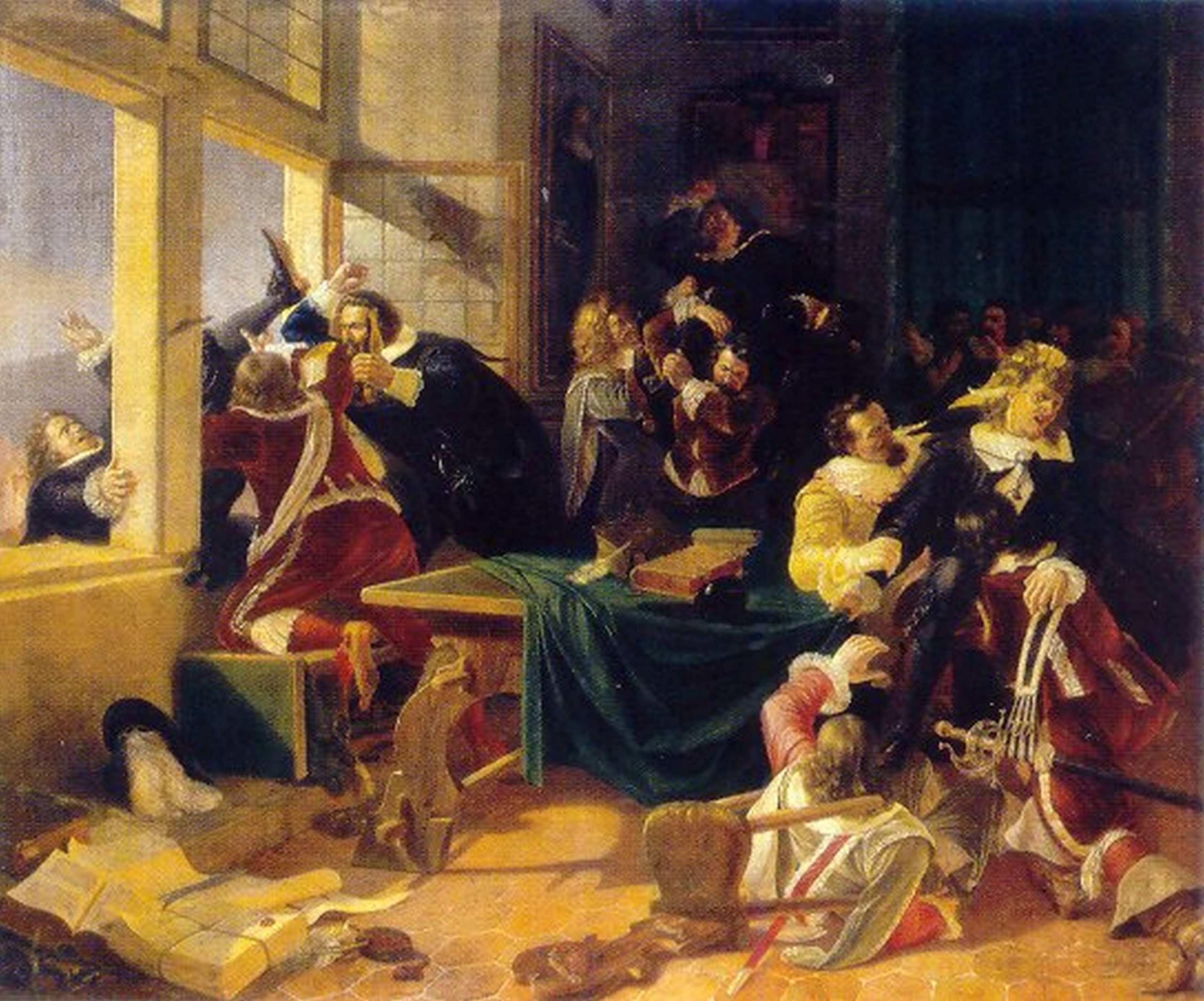
Ludwig Wing, Prague Castle, Prague defenestration 1618
400 years since the event that changed the course of the Czech nation’s history
No event affected Czech history or the nation’s psyche more strongly than the battle – and defeat – on White Mountain on the 8th of November 1620. How and why did the Czech nation lose its independence for almost 300 years? A look back at a diplomatic incident at the start of the Thirty Years’ War between Catholics and Protestants, which deeply affects the course of both Czech and European history.
Rudolf II von Habsburg (1552 Vienna – 1612 Prague), Roman Emperor, Hungarian, Bohemian and Croatian King, and Austrian Archduke, the last Habsburg monarch and the last to hold the rank of Emperor of the Holy Roman Empire, made Prague his residence. Three years before his death, he signed the famous Charter, at the time the most liberal religious law in all of Europe, which ensured freedom of religion not only for the nobility, but also for city dwellers and rural subjects.
After the death of Emperor Rudolf in the year 1612, his younger brother Matthias ascended the Imperial throne and transferred the seat from Prague to Vienna, whereby Prague would not be the permanent residence of a head of state again until the year 1918. Ferdinand II (from the Styrian branch of the Habsburgs) was designated the successor to the Bohemian throne. Ferdinand’s zeal for the Catholic faith was an open secret. The Protestant nobility resisted accepting him as a monarch, but when the Archduke indicated that he would permit certain privileges, especially when he promised the preservation of provincial freedoms, Estate privileges and Rudolf II’s Charter of the 9th of July 1609, which guaranteed freedom of religion, the Bohemians accepted Ferdinand as their future King in the year 1617, and his coronation was even held in Prague. Ferdinand, a young and very ardent Catholic, began to energetically interfere in various parties’ affairs, and he denied the Bohemian Estates their religious and political rights much more tenaciously than his predecessor. It was as if he wanted to fulfil his words that he would “rather rule a desolate land than a land full of heretics“. He revoked the preelection promises of the preservation of Rudolf’s Charter of the year 1609 by simply tearing up the document and throwing it out the window, where it scattered among the falling leaves. Of course, such actions could not go unanswered.

Moravians at the Battle of White Mountain
The defenestrations of Prague, and the beginning of the Bohemian Revolt
It’s the year 1618, and political and religious tension in the Kingdom of Bohemia is extremely high. Most of the predominantly Protestant nobility now deeply regrets the election of Ferdinand II as the King of Bohemia only a year earlier. As if that’s not enough, the Habsburg monarch’s absolutist government shows little respect for the Bohemian nobility, and tries to forcefully centralise power in its own hands. At the end of May 1618, the tension reaches its peak.
On the 23 of May 1618, representatives of the Bohemian Protestant nobility come to the Castle, and throw the Royal governors from the windows of Prague Castle as a demonstrative act of resistance against the violation of Rudolf’s Charter and the restriction of Estate rights. The event passes without loss of life, but marks the beginning of the Bohemian Revolt.
Is it legitimate for a religiously fanatic Emperor to violate the previous Emperor’s Charter, which guaranteed freedom of religion? The “local“ conflict will thereby drag all of Europe into a spiral of bloody violence, which will last thirty years, and will deeply mark European history. Nevertheless, as was shown later, it was not merely about polarisation due to different religions; it was primarily due to the Habsburgs’ efforts to win power in Europe. Catholic France, for example, threw itself into the war on the side of predominantly Protestant states, because it wanted to weaken the Habsburgs’ power.
A situation that culminates in a battle
After the death of Emperor Matthias in March 1619, the unpopular Ferdinand could not actually seize the throne in the Bohemian and Austrian lands. The Protestant nobility from Upper and Lower Austria, which did not want to accept Ferdinand as Archduke, also joined the side of the Bohemian non-Catholic Estates. Under the leadership of Matyáš Thurn, the Bohemian Estates’ armies besieged Vienna, but did not attempt to conquer it. The Estate leaders agreed to try to reach a diplomatic solution. They wanted to force Ferdinand to confirm the former Estate and religious freedoms in Upper and Lower Austria and in the Bohemian lands.
On the 5th of June 1619, representatives of the Austrian Protestant nobility penetrated the Hofburg in Vienna, and presented their demands to the Emperor. However, before he was forced to accept these demands, he was liberated by the rapid intervention of a military unit. He regarded it an action of, and protection by, divine providence. On the 19th of August, he was declared deposed by a General Assembly of the Bohemian Crown.
A week later, Frederick V of the Palatinate (known as the “Winter King“ because his reign did not even last till spring), who stood at the head of the Protestant union, was elected the new King of Bohemia. Despite partial military victories, the rebels’ situation was difficult, and the Estates received neither soldiers nor money to pay their wages. Requests for help sent to prominent Protestant monarchs mostly went unanswered. On the contrary, Emperor Ferdinand II’s position improved day by day. He managed to forge an alliance with the leader of the so-called Catholic League, Maximilian of Bavaria, and together they managed to pacify rebellious Estates in the Austrian lands. Together, an Imperial army led by Charles Bonaventure von Bucquoy and an army commanded by Johann Tserclaes von Tilly crossed the country’s borders on the 20th of September, and set off for Prague. Although their advance encountered resistance from the still combatready Estate army, the armies conquered one city after another, and at the beginning of November stood before Prague.

Defenestration in 1618, painting by Karel Svoboda
Battle of White Mountain on the 8th of November 1620
Sunday, therefore, was to be the decisive day. The allied Imperial army numbered around 28,000 soldiers, while the Estate army consisted of approximately 21,000 men. The Catholic troops’ numerical superiority was partially offset by the Bohemian army’s more advantageous position. Morale wasn’t great on either side; the Imperial troops suffered from poor supplies, while the Estate soldiers hadn’t seen wages since September. It is therefore no surprise that neither of the opposing sides was particularly keen to go into battle. Count Bucquoy, in particular, had great reservations regarding a direct attack on fortified Estate positions. Time passed slowly, and as noon approached, it was decided at a meeting of the Allied Command that a small attack would be carried out, with the aim of causing a skirmish which would indicate how to proceed. The first attack by the right Imperial wing began before noon, and after one o’clock in the afternoon it was all over. One after another, the demoralised Estate units turned and fled in confusion. Almost three thousand dead lay on the battlefield, of whom two thirds were fallen Bohemian Estate troops. The losses were therefore not huge, and the Estates could successfully attempt to defend Prague. However, the revolt’s leaders could no longed find sufficient will to mount a defence. Frederick V of the Palatinate, King of Bohemia, who had barely ruled for a year, did not participate in the battle at all, waiting it out in Prague instead. He later decided to go into battle with his entourage, but before he even left the city he met the returning generals. They informed him that the battle had been completely lost, which the King could see for himself when he looked out over the city walls. A day later, the King decided to leave the city. Together with his wife and young son, he left for Wrocław. Of course, he took away with him a large number of valuables which had been in Prague, and when even “Winter King“ Frederick abandoned Prague, it was obvious that the Estates had lost. Some Estate politicians also joined the fleeing King, while others stayed in the hope that the Emperor would forgive them, and surrendered to him hoping for his mercy.
The post-White Mountain period, and the decline of the Bohemian nation
Ferdinand II was therefore able to seize the throne once more. He appointed Karl von Liechtenstein Governor of Bohemia. A wave of arrests, confiscation of property and harsh punishments followed. On the 21st of June 1621, he had 27 leaders of the revolt, from the ranks of the nobility and the burghers, executed in Prague’s Old Town Square. The trial which preceded the execution was governed by Imperial directives rather than applicable provincial law, and the Senate was not permitted to let the defence speak. The executioner, Mydlář, had to mount twelve of the heads which had been chopped off on the Old Town Bridge Tower. Eleven of them hung here until the Saxon army invaded in November 1631.
In the year 1622, the King issued a so-called General Pardon, by which he granted a reprieve to the other participants in the revolt. The pardon related to the preservation of the nobles’ personal rights, but not their property. The following year and a half saw further extensive seizures of the Bohemian Protestant nobility’s and Royal towns’ property, which was subsequently advantageously acquired by other, mostly foreign, noble Catholic families.
As a result of the harsh anti-Reformation policy, a large part of the Bohemian intelligentsia, which refused to convert to the Catholic faith, had to leave the country. The post-White Mountain period was also critical for the Czech language, which experienced a decline. All Czech books, regardless of content, were burned. Unfortunately, many Bohemian personalities who refused to submit (e.g. John Amos Comenius, Wenceslaus Hollar etc.) were also forced to leave. In practice, this meant the gradual cultural and linguistic decline of the Bohemian nation.
Estate representatives had a choice – either convert to the Catholic faith, or emigrate. Subjects, however, were forced to convert to Catholicism. This caused enormous damage to the Bohemian state, and subsequent centralisation measures seriously undermined its sovereignty, as well as the cohesion of the individual Crown lands. Bohemian culture was forced into a secondary position.
In Bohemian history, Ferdinand II is traditionally perceived in a strongly negative light, and his reign as the beginning of the “Darkness“.
On the 28th of October 1918, a delegation of the National Committee led by Karel Kramář commenced talks in Geneva with the representative of the anti-Austrian foreign resistance, Edvard Beneš, regarding the creation and form of an independent Czechoslovak state. The same evening, the National Committee issued the first law on the establishment of an independent state, after which the National Committee’s proclamation was published:
“People of Czechoslovakia. Your age-old dream has come true…“
The independent Czechoslovak state came to life.
By Arch. Iva Drebitko, MSc

